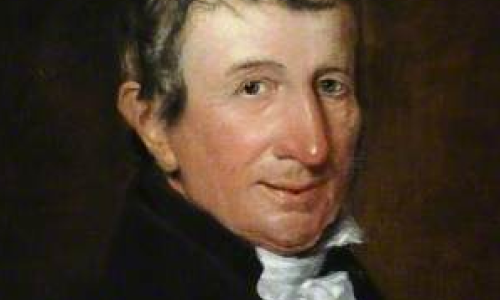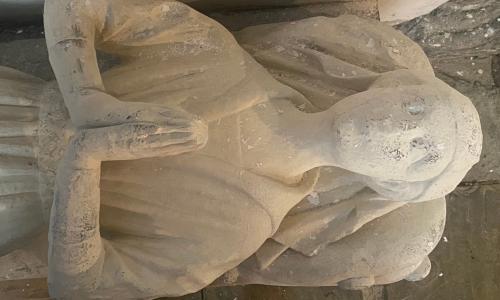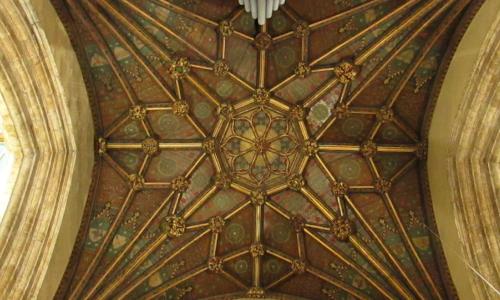When was the Castle Street burial ground founded?
From the 1770s onwards the city of Hull grew very rapidly. The mediaeval city walls were taken down to build new docks and housing. More people living in the town also meant more people dying, so more space was needed for burials. An Act of Parliament for town improvements was passed in 1783. This included plans for a new burial ground beyond where the old walls had stood. This was Castle Street Burial Ground, which opened in 1785. A new jail was built next to it.
Managed by Holy Trinity Church, Castle Street Burial Ground was a large piece of land with plenty of space for the growing population, which by 1811 was more than double what it had been forty years before. Open ground, called Dock Green, lay to the south of the burial ground. This could have been used to extend it, but in 1846 it was turned into Railway Dock, to serve the transport of cargo to and from the nearby Hull & Selby Railway Goods Depot. Of course, when the burial ground was planned in the 1780s, the invention of railways lay far in the future. The railways brought even more people to live (and die) in Hull: the population doubled again, even faster, in only ten years between 1831 and 1841 – from nearly 33,000 people to nearly 65,700. By 1861, the year after the burial ground closed, there were almost 97,700 people in Hull. The burial ground was no longer big enough. Overcrowding meant graves were dug and re-dug, cut across and moved to squeeze in as many people as possible.
Who was buried at Castle Street?
A complete cross-section of the population, from well-to-do builders and architects down to ordinary labouring people and the poor from the workhouse, were buried at Castle Street.
Some long-established Hull families continued to use family plots around Holy Trinity, if there was room. Newcomers, strangers, and visitors were buried at Castle Street. These included some soldiers and their families from the barracks at the Citadel (although Drypool Parish mainly served them), sailors, and travellers on ships and railways. Holy Trinity Parish stretched right out to the west of Hull so some people from local villages are also interred at Castle Street.
One of the exhumed bodies identified at the recent Castle Street archaeological dig was Frank Appleyard (1783-1850). He was a prominent and well-connected person in Hull: a master builder and bricklayer who played a part in the construction of Regency and early Victorian Hull – including many buildings we can still see. He also has a monument in the Minster.
Why is Castle Street called “Castle Street”?
The road led to the South Bridge over the River Hull, to what was originally called the Castle, and later known as the Citadel: the military garrison of the town. Henry VIII had had it built as a linear fortress along the East bank of the river: there was a central fort, or castle, between two blockhouses, joined with a wall. Its purpose was to defend the mouth of the river and the city behind it. In Charles II’s time, during wars with the Netherlands, it was redesigned by the Swedish engineer Sir Martin Beckman as a triangular fort. During the time Castle Street Burial Ground was in use, soldiers were stationed there to defend Hull during the French Revolutionary and Napoleonic Wars.
When did it close and why?
It is thought that some 44,000 people were buried at Castle Street during its operation from 1785 to 1860. The burial ground closed after an Act of Parliament banned burials in city centres and inside churches. This was after there had been two serious outbreaks of a disease called cholera, and people realised that it might be unsafe to live too close to where large numbers of bodies were buried. Only a few burials were allowed in Castle Street after 1860 and had to be granted individual government permission: these were of people who had wanted especially to be buried with other family members already there. One of them was Elizabeth Appleyard, Frank's widow, who wanted to be with him.
Why do you dig burials back up?
When the burial ground was in operation it was common to re-open graves to add family members to a plot or vault. It was also common for bodies to be moved to make way for new development. In February 1863 the city was already planning to move bodies from the edge of the Castle Street Burial Ground to create a new street. There was considerable opposition as this portion of the graveyard contained a large number of cholera victims.
Today, when there are modifications to City Centres to improve things such as transport and drainage, a lot of digging takes place. If known burial sites exist, then very careful exhumation and moving must take place by qualified archaeologists. They have the chance to learn more about the people who are buried there, before they re-inter them in a suitable site. The Church insists on the utmost respect for the dead and ensures that the bones and artefacts are kept together where possible.
Before the 1920s, this was not always the case. Sections of graveyards were often moved, and have been for centuries. There were many reasons for this.
- To make way for new burials
- To make way for buildings, paths, roads, and other infrastructure
- To make sure the land was clean and did not have deadly diseases
During the dig at Castle Street which took place from 2019-21 several thousand bodies were carefully moved. They are still within the burial ground, but have simply been moved to safety, back from the new line of the road. 40 bodies have been brought to Hull Minster to reside close to the artefacts which they were found with. With permission from the Diocese, they are respectfully placed in a brick vault beneath Hull Minster's nave.




